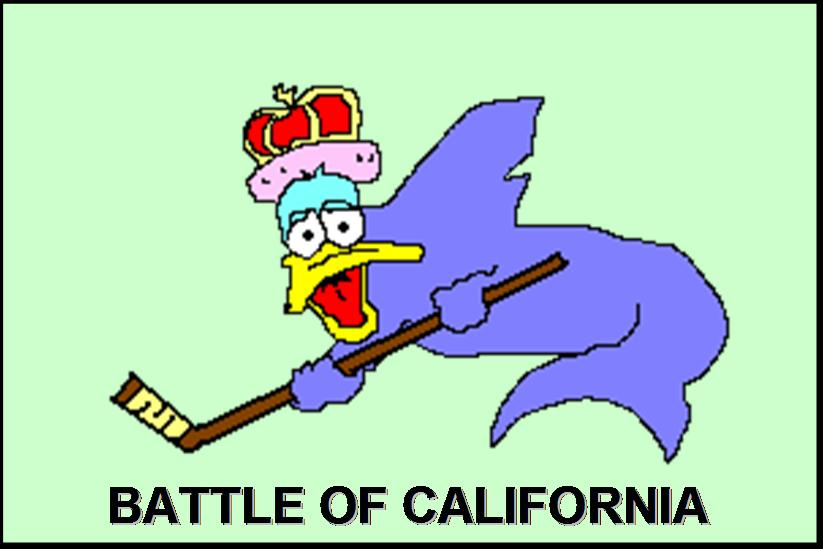League-wide scoring trends are depressing
Tom Benjamin, November 19, 2005:
The league projects out to score 1300 more goals this season. That's 104 more goals on the shootout, 1068 more goals on the power play, and 44 more goals shorthanded. If present trends continue, we can expect over the course of the season to see a total of 84 more even strength goals than we saw in 2003-04.Matt Fenwick, April 7, 2006:
...79% of the scoring increase this season is attributable to special teams goals, and 21% is attributable to even strength goals. Regardless of whether you are happy or unhappy about this, those are somewhat jarring numbers. ...Make of it what you want. I simply think that if we're going to evaluate the changes in the game, it's nice to know just what we're talking about.Tyler Dellow, May 6, 2006:
If the players can adjust to the new rules and play penalty free, the game would still be left as a higher scoring one, albeit marginally so. Whether it was worth the cost is probably in the eye of the beholder—the change in ES scoring on a per game basis this year is so small as to be almost unnoticeable—it’s like the difference between a 15 goal scorer and a 23 scorer.There are certainly other hockey bloggers who have written about the NHL's post-lockout scoring increase and its power play dependency, but I think these three guys have addressed it as well as anybody. Well, now that we're two full seasons into the New NHL™, I figured I'd take a graphical look at the goals-per-game trends across the league. The chart below takes the last two seasons and splits them into 27 weeks each. For each week (roughly 45 games per week), I have plotted three statistics:
- Average goals scored per game (excluding shootouts)
- Average power play goals scored per game
- 1/6 * Average power play opportunities per game

In 2003-04, the year before the lockout, the NHL averaged 5.14 goals per game, 1.40 power play goals per game, and 8.48 power play opportunities per game. In April 2007 (56 regular season games), the NHL averaged 5.30 goals per game, 1.43 power play goals per game, and 8.82 power play opportunities per game.
Now I'm not really a guy who subscribes to the "more goals equals more excitement" school of thought—as a matter of fact, probably some of the most boring hockey in my opinion is penalty-parade hockey (it not only kills the flow of a game, but there's only so much no-hit, set-play, ice-the-puck, play-in-one-zone time that I can tolerate). Whether the game is more exciting now than the pre-lockout NHL I'll leave to the reader, but as salaries and scoring rates gravitate back to pre-lockout levels, one has to wonder how meaningful the lockout really was and whether it could happen again.
Anyway, I found the chart pretty eye-opening. Reactions?









4 comments:
Great post, Earl. Personally, I think five-on-five action is more entertaining post-lockout, due to the occasional two-line pass and reduced clutch & grab on defense. In my mind it's the vertical game that needs to be emphasized, not just increasing goals scored.
I have no doubt that the refs have gotten a little more lax about penalties, but there are other factors contributing to this trend as well:
1. The players have adjusted, and some of the guys whose game depended on interference and hooking aren't in the league any longer, or have severely diminished ice time (hello, Derian Hatcher!).
2. The goaltending league-wide has improved. Nabokov used to be a top 5 goalie, now he's middle of the pack. You can count on one hand the number of teams without solid goaltending.
3. The coaches have adjusted their defensive schemes. Clogging up the middle doesn't work anymore, so now the strategy is to keep everything on the perimeter. Fewer penalties get called against the boards, and your goalie has a better chance of making the save on a play off the boards than on the rush.
The coaches have adjusted their defensive schemes.
This is a pretty good point, Ian. It's not too obvious from the graph, but looking at the endpoints, there's roughly 10 minutes or so less being played on powerplays, so theoretically 10 minutes or so more being played at even-strength.
Yet even-strength scoring per game (the difference between the red and blue bars) looks to be pretty static; 10 extra minutes isn't really yielding extra scoring.
I dunno--that's another trend that deserves mention. Teams are getting better at defending at even-strength under the new rules, it appears.
All very good and very true points, but I would like to address something that so many involved in the game, from fans to those who decide such things, have not wanted to address, that I believe would solve this problem. (SCORING)
It is my opinion that the only way to increase scoring, is to make the nets BIGGER. I don't understand why so many say that it would "kill" the game. As I see it, between the goalie’s equipment being much bigger than it was in the early '80's ("The Gretzky era"), and the goalies being bigger, faster, and more position ally sound, this is the only conclusion that makes sense to me; it is not only essential, but well earned.
To try and solidify my point a little better, lets look at Basketball and how that game changed. Although I do not know as much about basketball as I do hockey, it is my understanding that the game changed drastically when the players size and athletic abilities increase, making it much easier to score.
The only difference between these two examples, as I see it, is that they had adverse reactions to their respective sports.
In closing I would like to say, Bettman please make the nets BIGGER!
Post a Comment